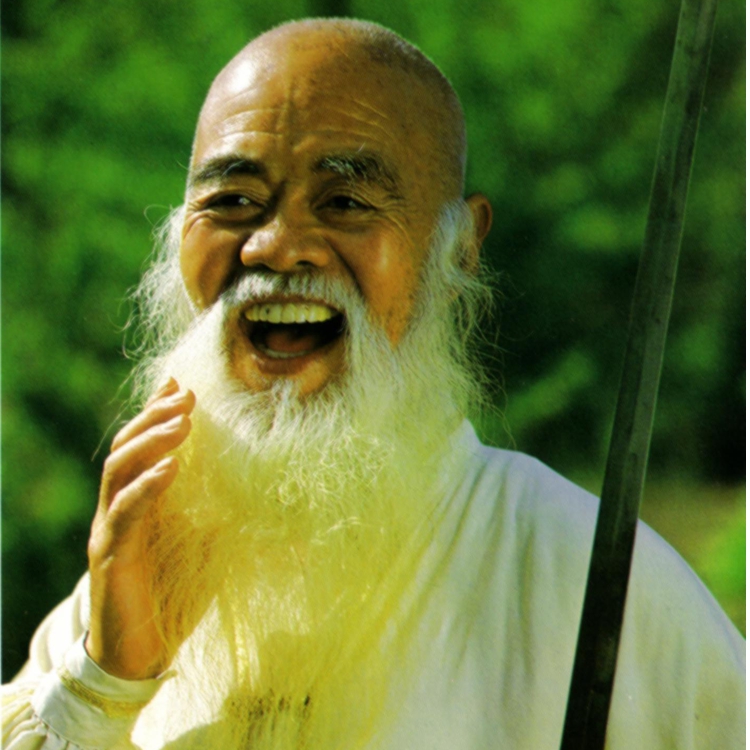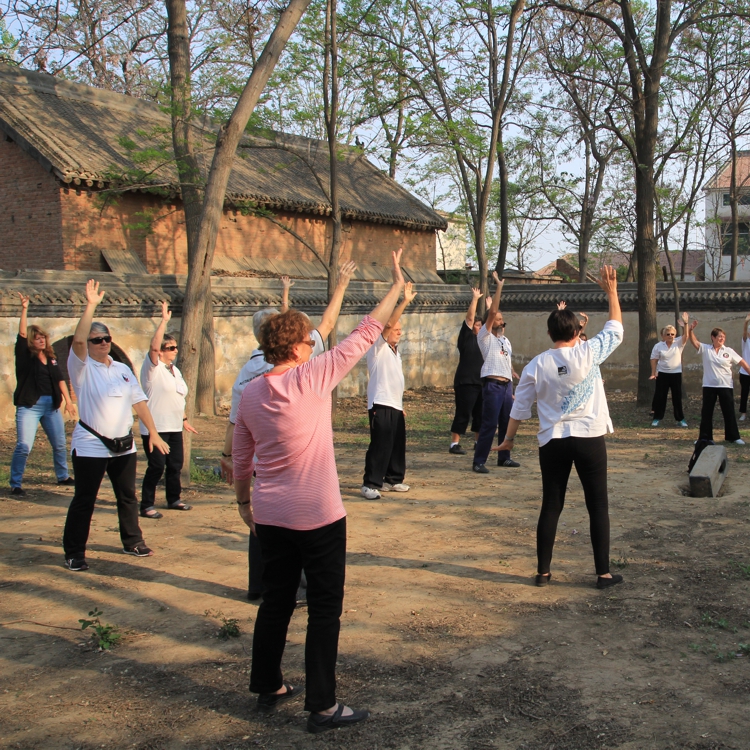For students of Tai Chi, the most important thing about this ancient Chinese health exercise Art – which has excited the interest of medical professionals and physical educators – is simply this:- it affords a deeply pleasurable experience.
Tai Chi has almost nothing in common with heavy breathing, or the exhaustive exercising of Western fitness programs. Tai Chi is a non-strenuous, relaxing but very efficient body and mind conditioner.
Tai Chi emphasizes a continuous circular breathing pattern, circulating the breath through the spine and along energy vessels known as “Qi” meridians in Chinese medicine. Qi is often referred to as bioelectricity or life force. The existence of Qi, an invisible energy has gained credence with the discovery of the “Higgs Boson” by scientists working with particle physics and Quantum Mechanics at CERN in July 2012.
Due to the fact that Tai Chi movements are slow and smooth, constant practice by following the natural way of breathing will ultimately result in the co-ordination of breathing with movements. Thus, the body and breath will flow in harmony.
Tai Chi is a slow motion mime of the martial art movements, and is often referred to as “Meditation in Motion:’ The Art emphasises relaxation and concentration, with the mind and body moving together in harmony.
Tai Chi is beautiful to watch and beautiful to do, the essential qualities of the art are slowness, lightness, clarity, balance, and calmness. Physically, there takes place a gradual building and toning up of the body, which, with continued practice of the Tai Chi sequence, will go on indefinitely.
There is no age limit to Tai Chi, it has no political or religious connotation, Tai Chi has no dogmas, it is available to all and it is a joy of living. A good definition of Tai Chi would be “harmony of the self through movement” and is known as the “Art of Life’ by the Chinese people.
AUSTRALIAN ACADEMY OF TAI CHI SURVEY REPORT
CHILDREN (7 to 13 yrs.). Reports from teachers indicated improved attentiveness, calmness and overall behaviour in class. (Richmond Primary School. teacher: W.Lewis and C.Ryan).
STUDENTS (14 to 20 yrs.). Calmed examination nerves. Increased concentration and relaxation. (St. Vincent College, Potts Point and Sydney Girls High School).
ADULTS (21 to 85 yrs.). Induced relaxation and improved stress management. Expanded awareness, concentration and working skills. Released stiff body postures. (Business executives, office workers, doctors, nurses, housewives, labourers, senior citizens).
SPORTS PARTICIPANTS Supplemented perfectly as a “warm up” and body toning system, and calmed nerves before a game or competition. Instilled concentration, control, co-ordination and precision, (athletes. golfers, bowlers, cricketers, tennis and squash players, skiers, surfers.)
PERFORMING ARTS Enhanced balance, co-ordination, flexibility, flow and rhythm. Inspired and augmented creativity. (musicians, actors, dancers, masseurs).
HEALING BENEFITS Improved conditions of stress, headaches, backaches, insomnia, arthritis, rheumatism, anaemia, indigestion, constipation, listlessness, mental strain, depression, and nervous breakdown.
An Introduction to Tai Chi
What is Tai Chi? Tai Chi is a form of Qigong, a moving meditation which has been practiced in China for thousands of years.
Based on a continuous flowing movement the exercise is performed in slow motion and coordinated with deep diaphragmatic breathing.
Visually it resembles an effortless dance, but in reality every movement is precise and is performed with a great deal of internal strength. Through the practice of the art one seeks to harmonise internal energy by promoting a balance between body and mind.
It does not matter how old you are or how out of condition you may be; this non-strenuous and non-exertive art is suitable for all. With a little patience and enthusiasm, you can master and enjoy its flowing movements and relaxing effects.
As a daily health maintenance system Tai Chi has proved invaluable to the Chinese for generations and for city dwellers is one of the most effective stress and tension relievers. It is an excellent supplementary body toning system for other sports and hobbies.
The art and philosophy of Tai Chi is derived from three main sources – the collective philosophies of the Chinese, Shaolin martial art and the study of nature. It is unique among the world’s exercise systems in that it is also a living philosophy, dynamic meditation, natural healing system and a self-defence art. Tai Chi is best known for its relaxing and calming effects. Its swimming and weaving motions soothe tired and overstimulated nerves and loosen tense muscles. Modern living conditions subject us to immense stress, leaving us drained at the end of each day. Tai Chi’s flowing movements and energy meditation have the therapeutic effect of slowing down the mind and refreshing the body.
As a healing art, it is widely used by the Chinese to treat conditions of stress, depression, insomnia, arthritis, rheumatism, diabetes, asthma, obesity etc. Because of its preventive and therapeutic properties, it is common practice for Chinese doctors to prescribe Tai Chi as part of the treatment for ailing and convalescing patients. In fact, many Chinese doctors are Tai Chi practitioners themselves.
Although the art is suitable for all ages, it is particularly popular with the older Chinese because of its non-exertive and nonstrenuous movements – it is practised for recreation, relaxation, body fitness and mental alertness. It is not uncommon for visitors to the East to be captivated by the sight of groups of Tai Chi practitioners going through their rhythmic movements each morning at sunrise in parks.
1. Physical: Tai Chi exercises develop the physical body to its natural potential in health and fitness, coordination in movements, sensitivity and balance, body-control and self-discipline.
2. Mental: The physical control and stability is reflected on the mental state in the form of a balanced mind, capable of making rational decisions and taking responsibilities. The mind is active, free and spontaneous. Tai Chi energy meditation stimulates and clears the mind. The flowing movements calm the spirit, sharpen the mental faculty and improve the sensitivity and awareness.
3. Emotional: Good breathing, proper balance and positive mental state stabilise the emotions. The physical and mental exercise gives proper channelling to the emotional energy. Tai Chi stimulates and releases `blocked’ energy and facilitates positive expression.
4. Spiritual: The philosophy of Yin-Yang balance is inherent in all phases of growth and development. Tai Chi in its highest application teaches the principle of natural and spiritual growth. It enables the practitioner through increased awareness to examine his life situation with a more positive and realistic viewpoint, and gives him/her the will and the way to improve the aims and lifestyle.
Grandmaster Gary Khor – Australian Academy of Tai Chi & Qigong Founder and President since 1976



